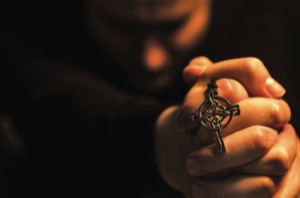
Have you ever heard of a healthy prayer life? There are several key elements to a healthy prayer life – and the most important is our relationship with God.
Rev. D Flanagan says that our relationship to God can be like that of a personal friend. When we feel that God is absent from us, we assume God is somehow separate and distant from us. If, however, we can reimage God to be our “ground of being” rather than “something other,” our relationship with the “one who created us” (Our Creator) becomes more intimate and constant.
Prayer has a social component too. Self-renewal through the one who created the world and us moves us to a higher purpose, thus, a call from God. God’s call is to use us in the healing of the world.
The Bible stories remind us of the faithfulness of our covenant God. Without a strong basis in faith, if technology ultimately fails us, many in our culture may be facing tremendous personal and social crises.
Prayer, too, is risky. When we pray, we are transformed and moved to a higher calling to change the world. I like centering prayer, although it was difficult at first, I like meditating on Scripture. There are a variety of ways to invest in prayer. One style of prayer is not superior to another, but one style may be more comfortable than another for you.
Rote prayers, the most common style of prayer, can be public or private. Rote prayers are common in public worship. The Savior’s (Lord’s) Prayer, the most common rote prayer, is almost universally used in Christian worship.
There are a number of prayers designed to enhance one’s relationship with God. The traditional centering prayer focuses on one word such as “God” or “love.”
Intercessory prayers invite God to change something. Intercessory prayer can be of a personal nature, seeking something for the one praying, or it can be of a social nature.
Praying the Scriptures, or lectio divina, encourages us to live in the Scripture, to allow the Scripture to move us. In short, the Scripture prays for us.
Silence may be the most powerful form of prayer. In the silence, if we listen intently as did Elijah, God will encounter us in surprising ways.
Movement may be the least appreciated form of prayer. The movement of our bodies praises God, expresses suffering, or simply communicates openness. Prayers of thanksgiving are uplifting, not only for God but also for us. Giving thanks to God in prayer often motivates us to give thanks for other people and other things in our lives.
Finally, there are the prayers of higher purpose, which may feel more like prayers of resistance. In these prayers of response we offer ourselves to God for higher purposes.
We may be intentional about just one form of prayer, or several forms of prayer, but prayer is not an isolated practice.
If prayer is a human response to our awareness of God, then prayer is manifested in every aspect of our lives. No matter what we are doing, when we are aware of God, we are praying.
Ultimately, prayer moves us to a higher plane. The power and intent of prayer is fulfilled in community. This community is engaged in the healing of the world.
Rev. Dan Koeshall is the Senior Pastor at The Metropolitan Community Church (The Met) in San Diego, California, themetchurch.org.











Its like you learn my mind! You seem to grasp a lot approximately this, like you wrote the e-book in it or something. I think that you simply could do with some % to drive the message home a little bit, however instead of that, this is magnificent blog. A fantastic read. I’ll certainly be back.